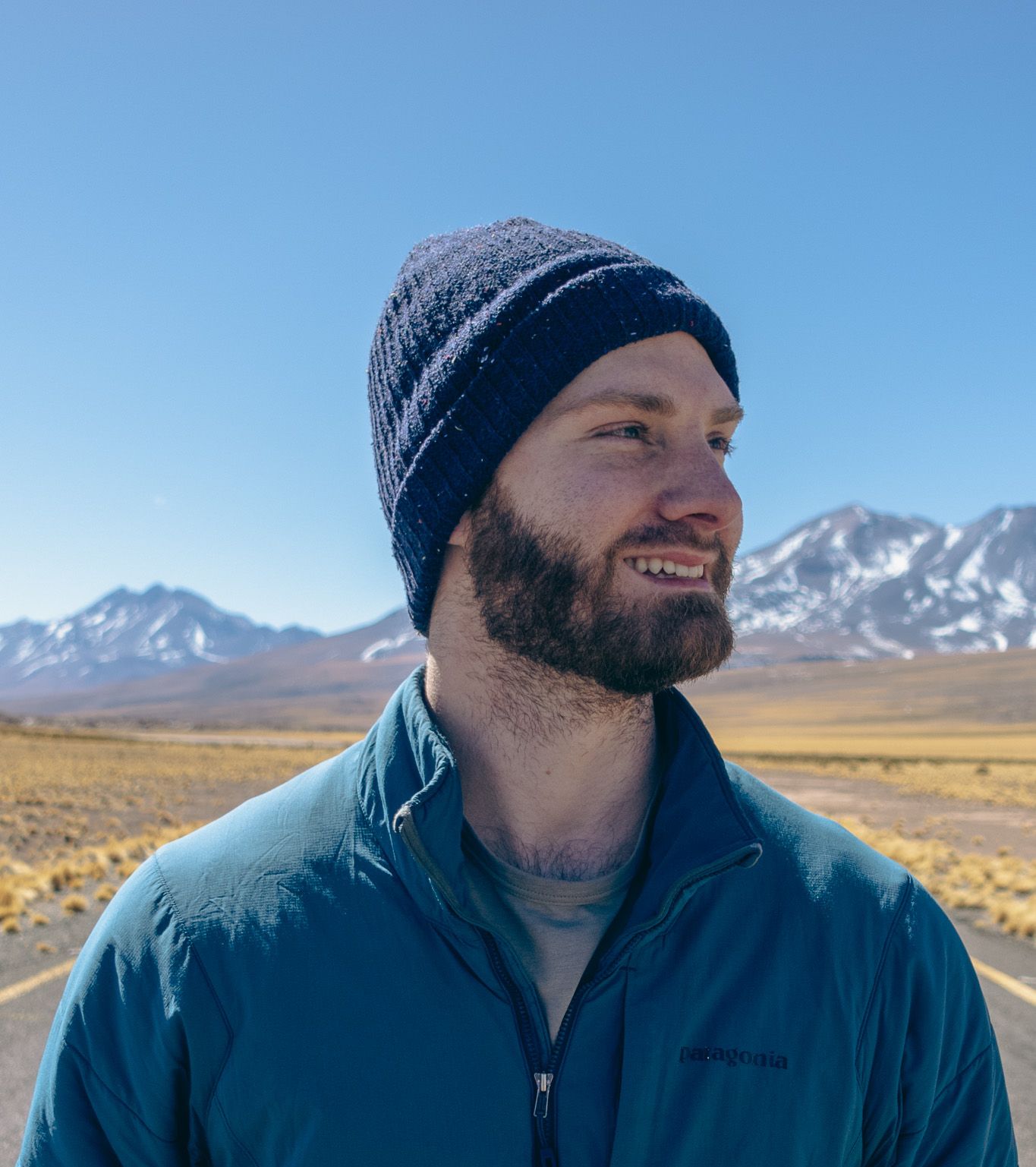Braving the larch madness for orange blood
In pictures, an epic Fall sunrise in the Pacific Northwest
I have a confession to make. Until about five years ago, I didn’t know what a larch was. And I hadn’t seen a larch until about four years ago.
I grew up in Washington, but right outside Portland, Oregon, where the elusive tree isn’t really a topic of discussion. Most backcountry trips were to the Columbia River Gorge, Mount Hood, Bend, the Oregon Coast, and Mount St. Helens. Generally speaking, not much farther north than St. Helens.
When I left the East Coast and moved back to Washington, living in Seattle has given me the chance to discover the northern part of the state that I didn’t even know existed. It’s been incredible, really, and not something I expected.
Which brings me to the larch. Every year, thousands of people [1] head to the mountains in Washington to see this deciduous conifer’s golden needles. Most conifers (plants that have cones and needles) are evergreens. But a few species, like the larch, actually turn bright yellow and shed their needles in the fall. They aren't everywhere though, larches only grow in certain climates at higher altitudes (generally 2,000 - 7,000 feet), so you gotta work for ‘em.
The larch-viewing window is short, typically only late September to mid-October. So, right after my plane landed from Germany, it was time for another backcountry trip.
We hiked up to Lake Ingalls and camped overnight in Headlight Basin. It’s one of the most popular hikes when the larches are in full swing, because, during sunset the entire basin shimmers with golden needles.
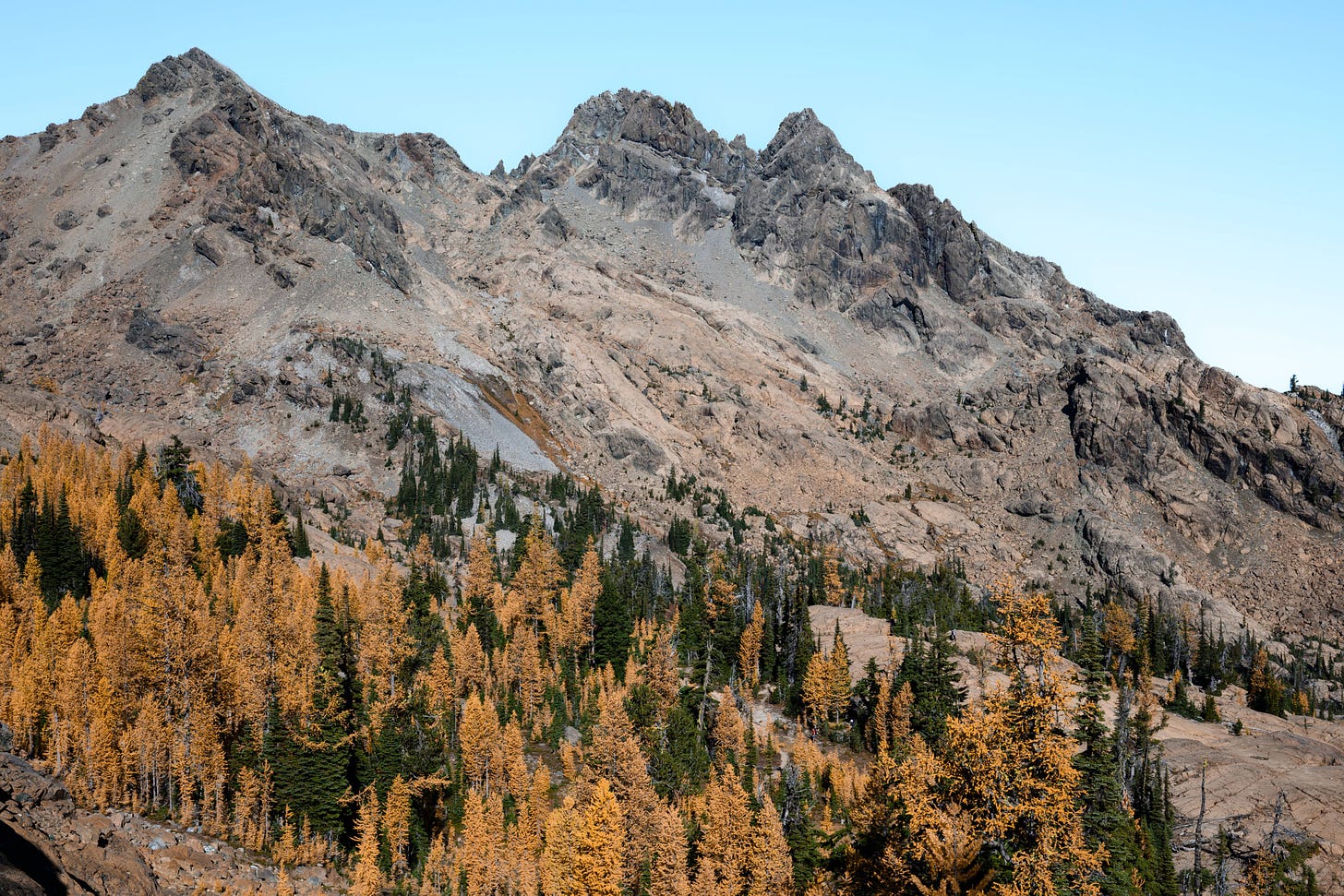
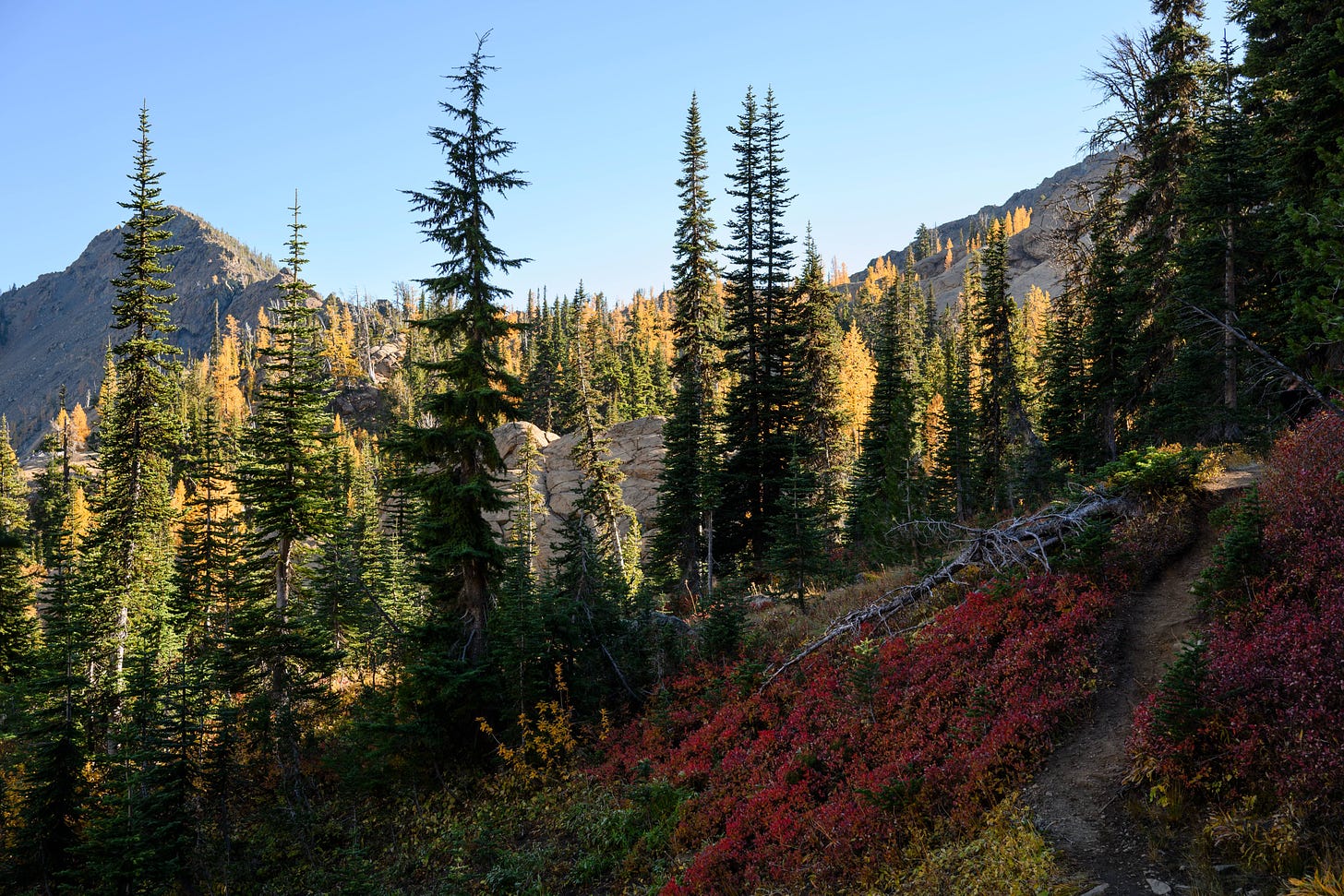
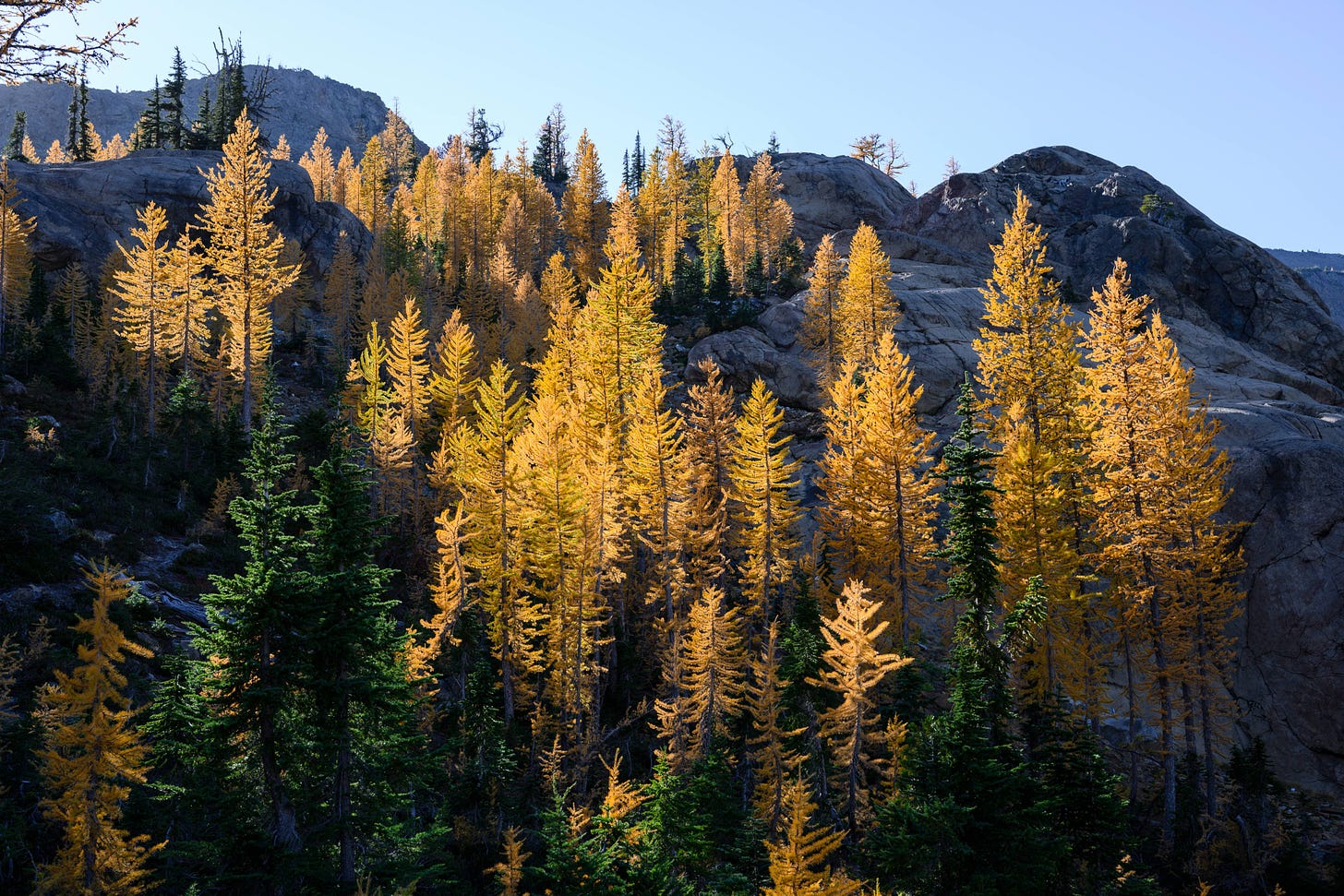
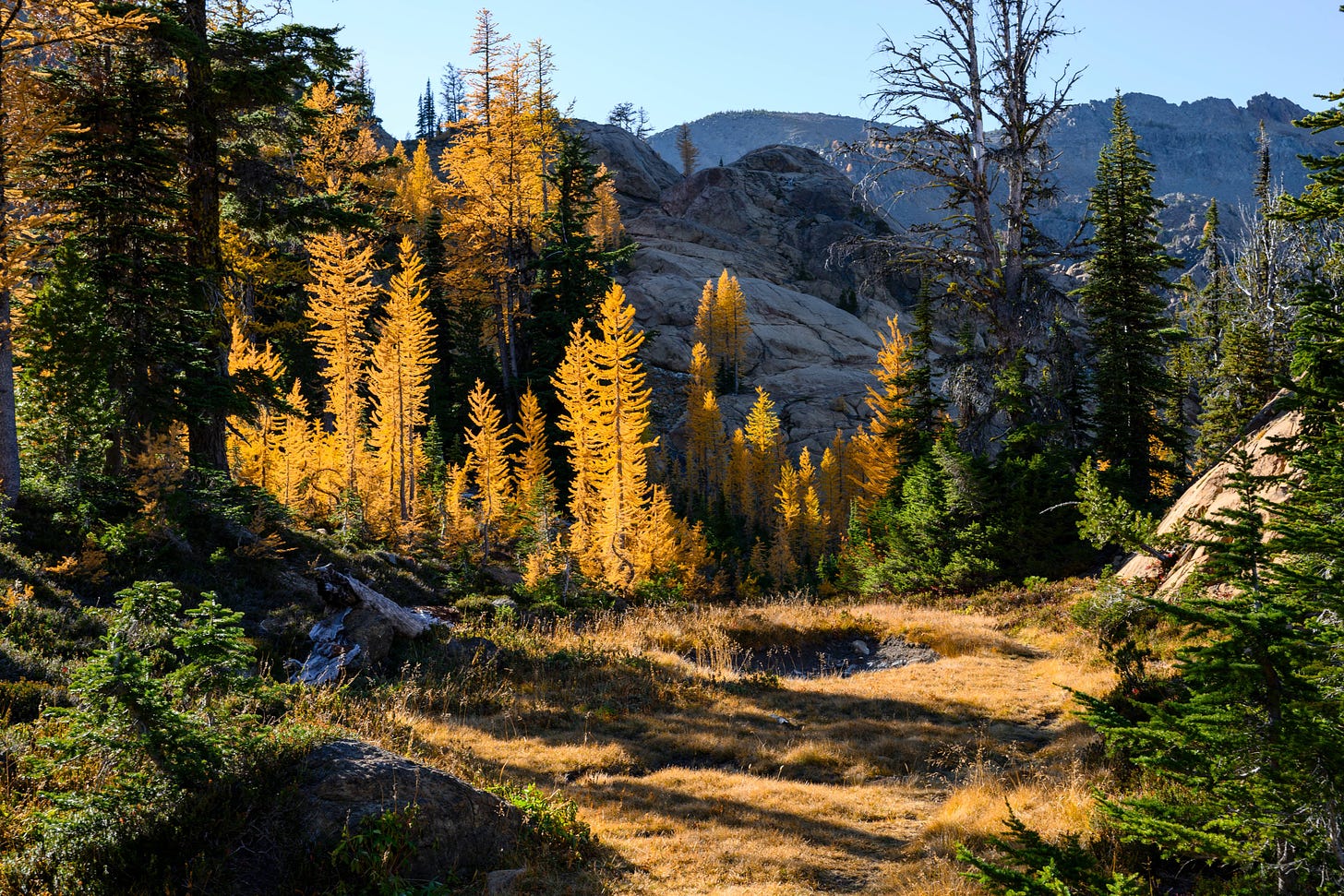
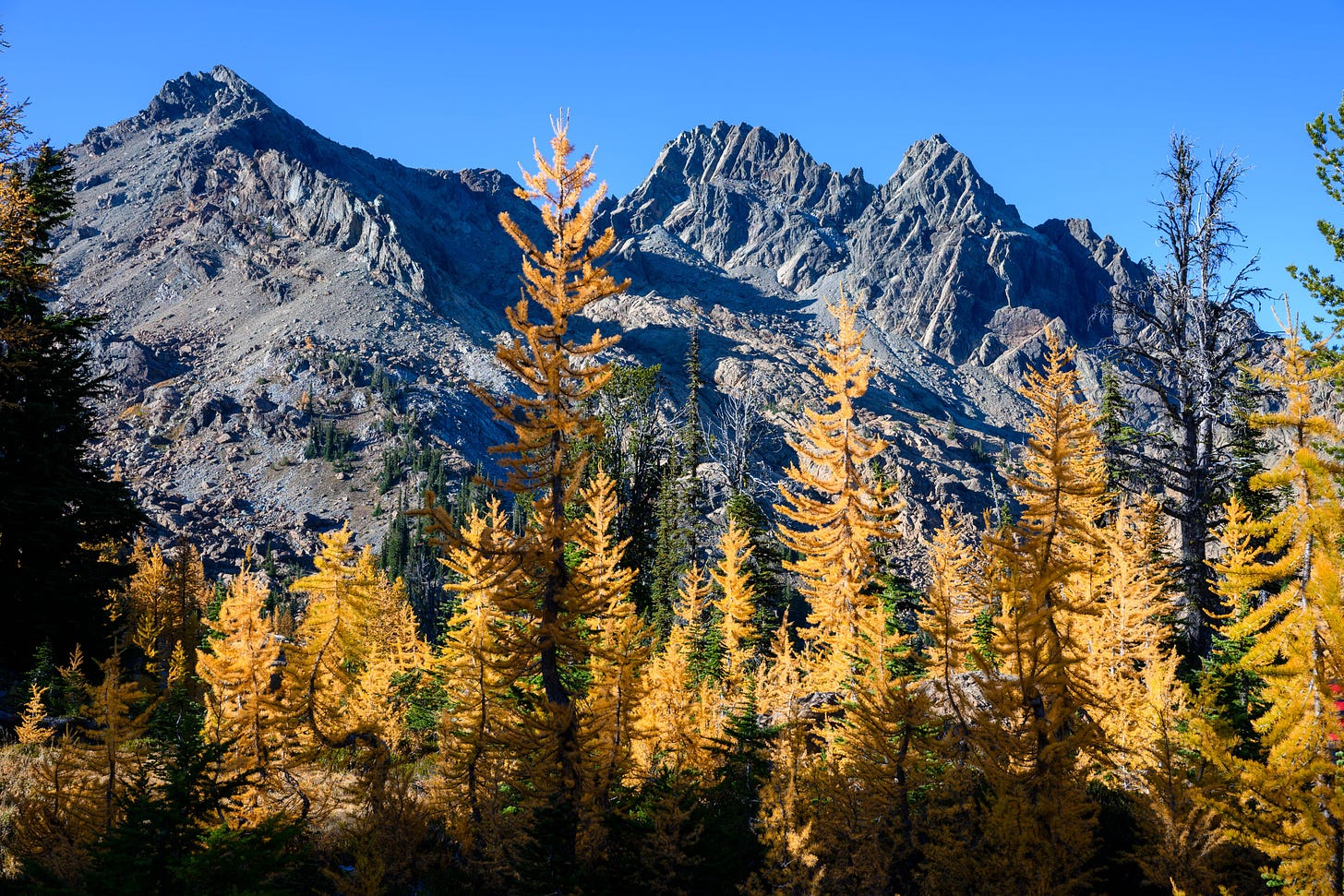
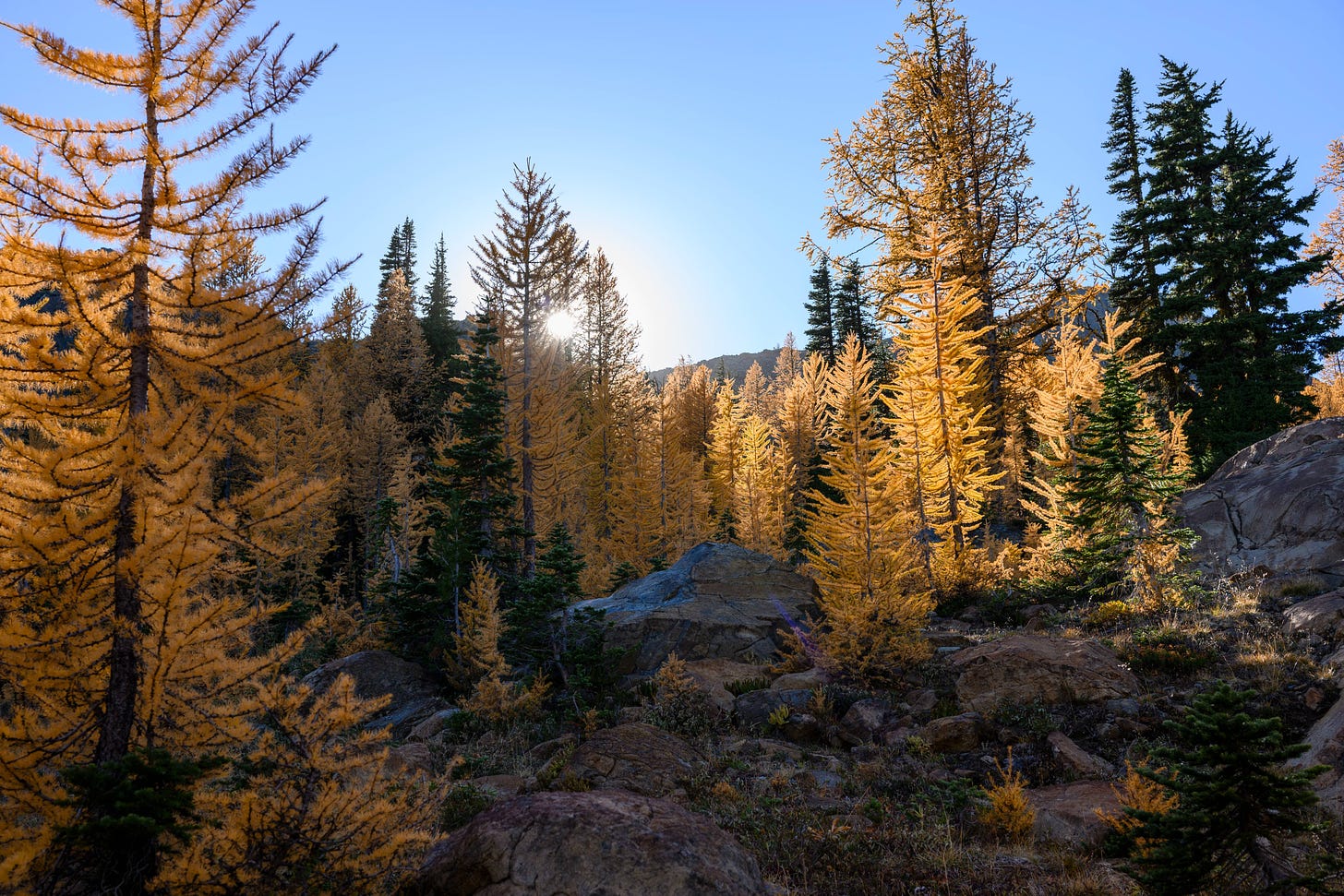
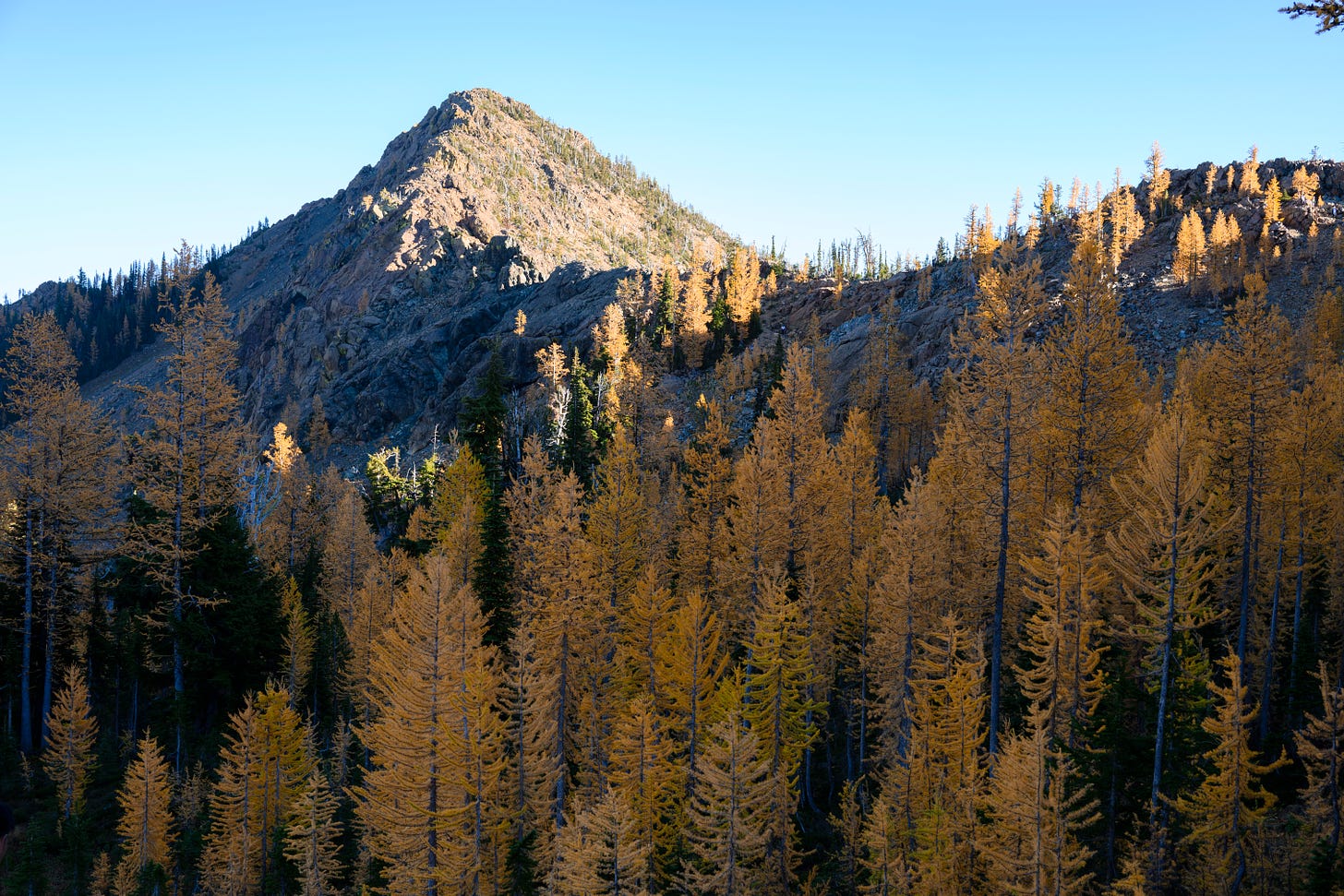
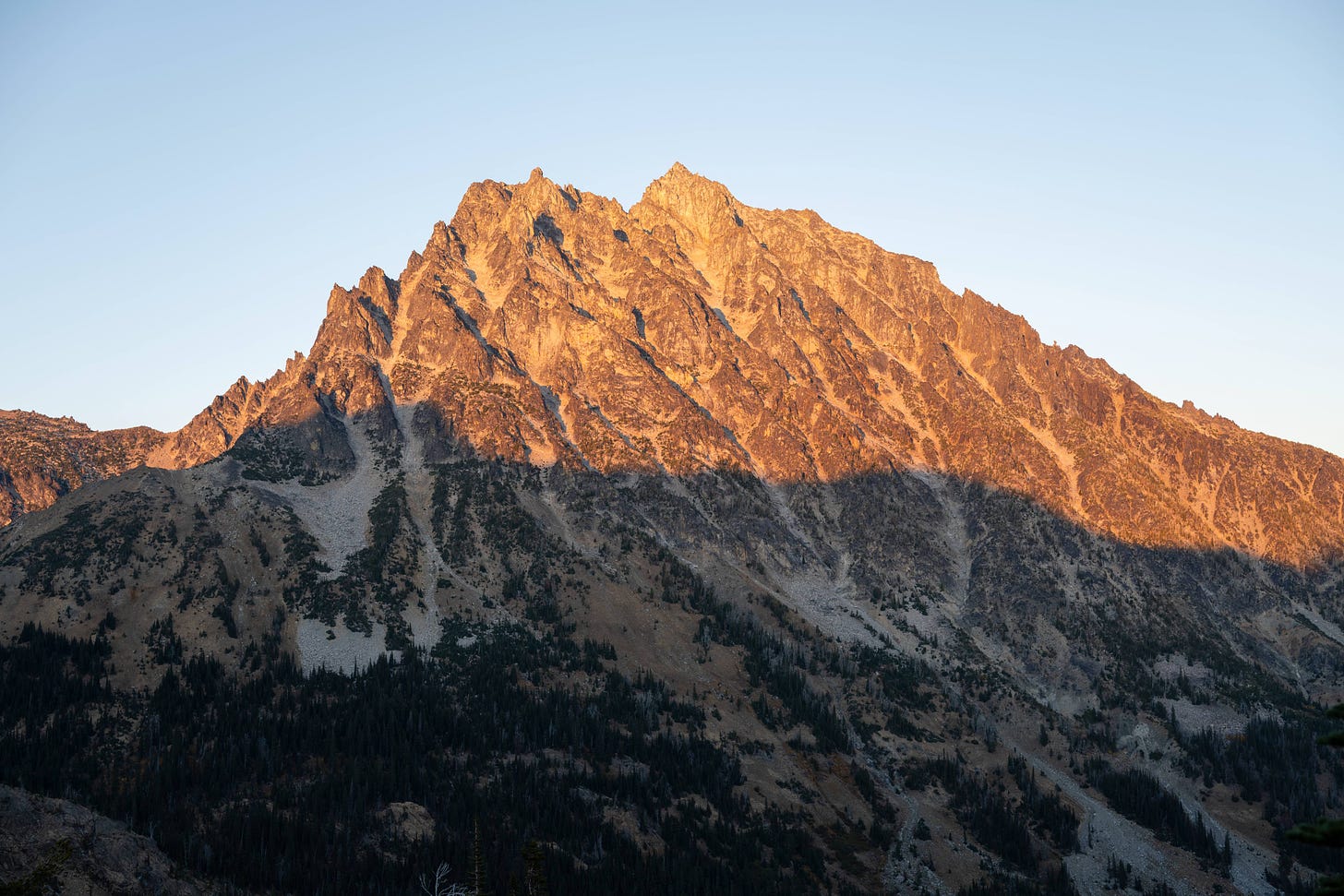
During the sunrise though, the larches were bleeding orange.
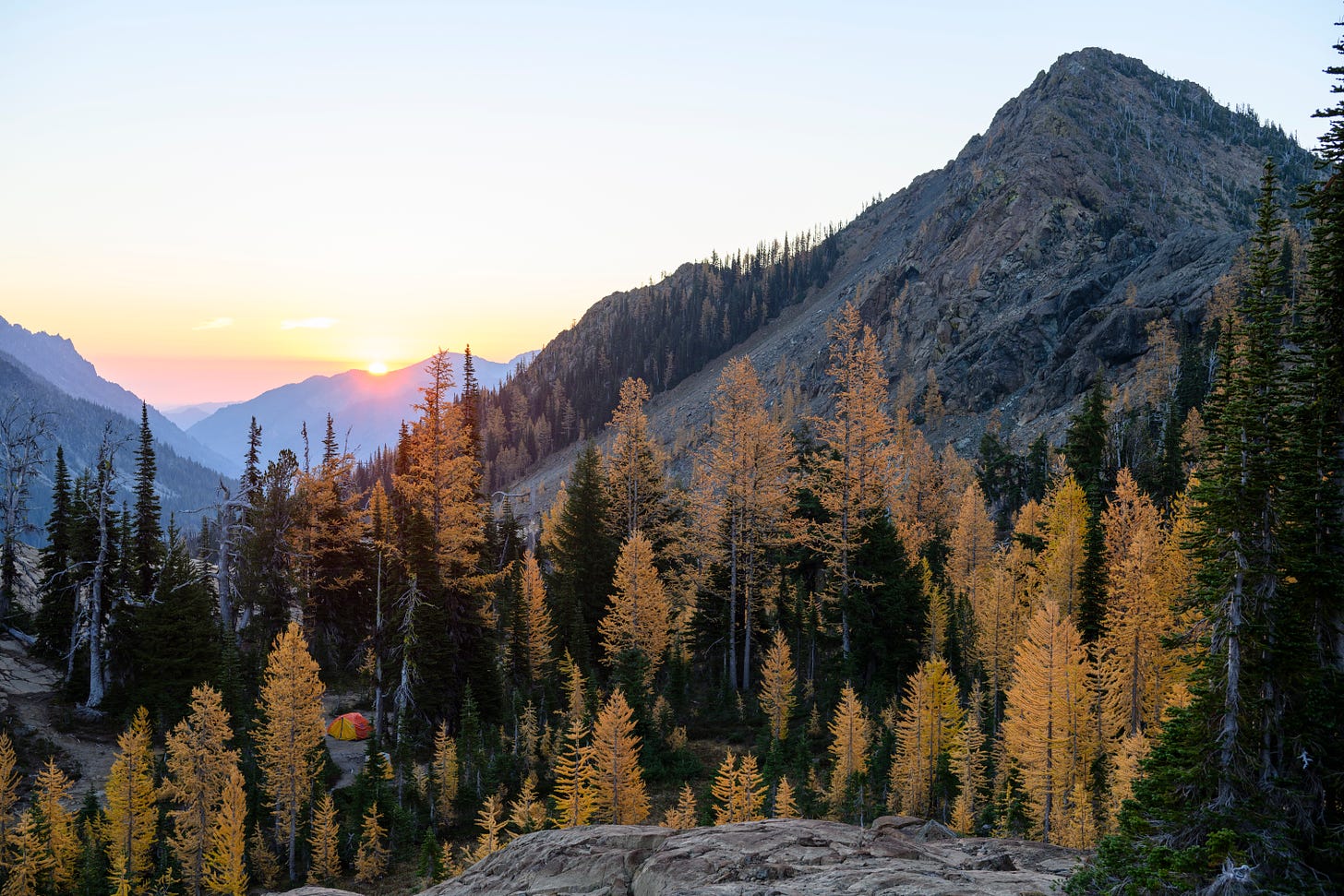
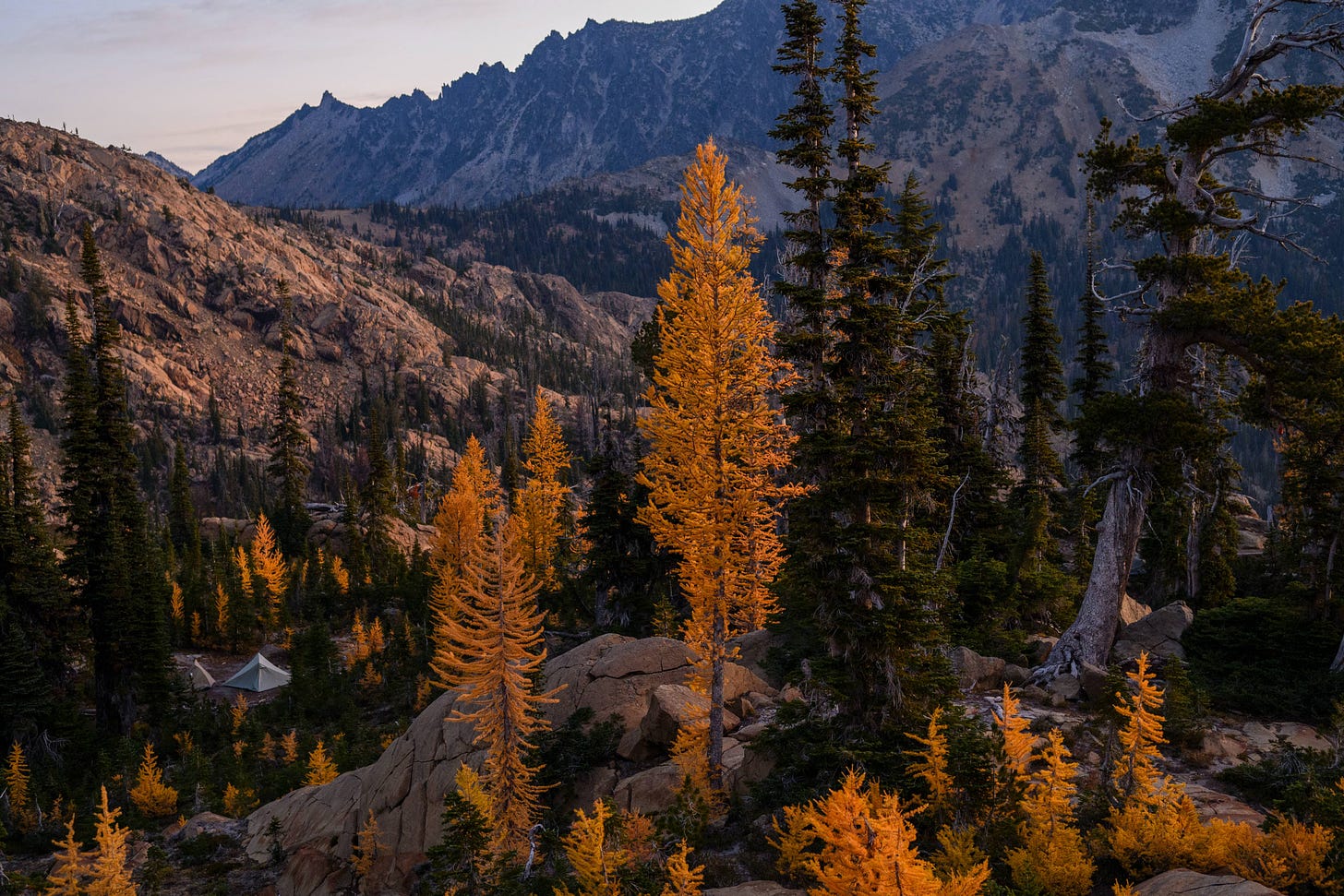
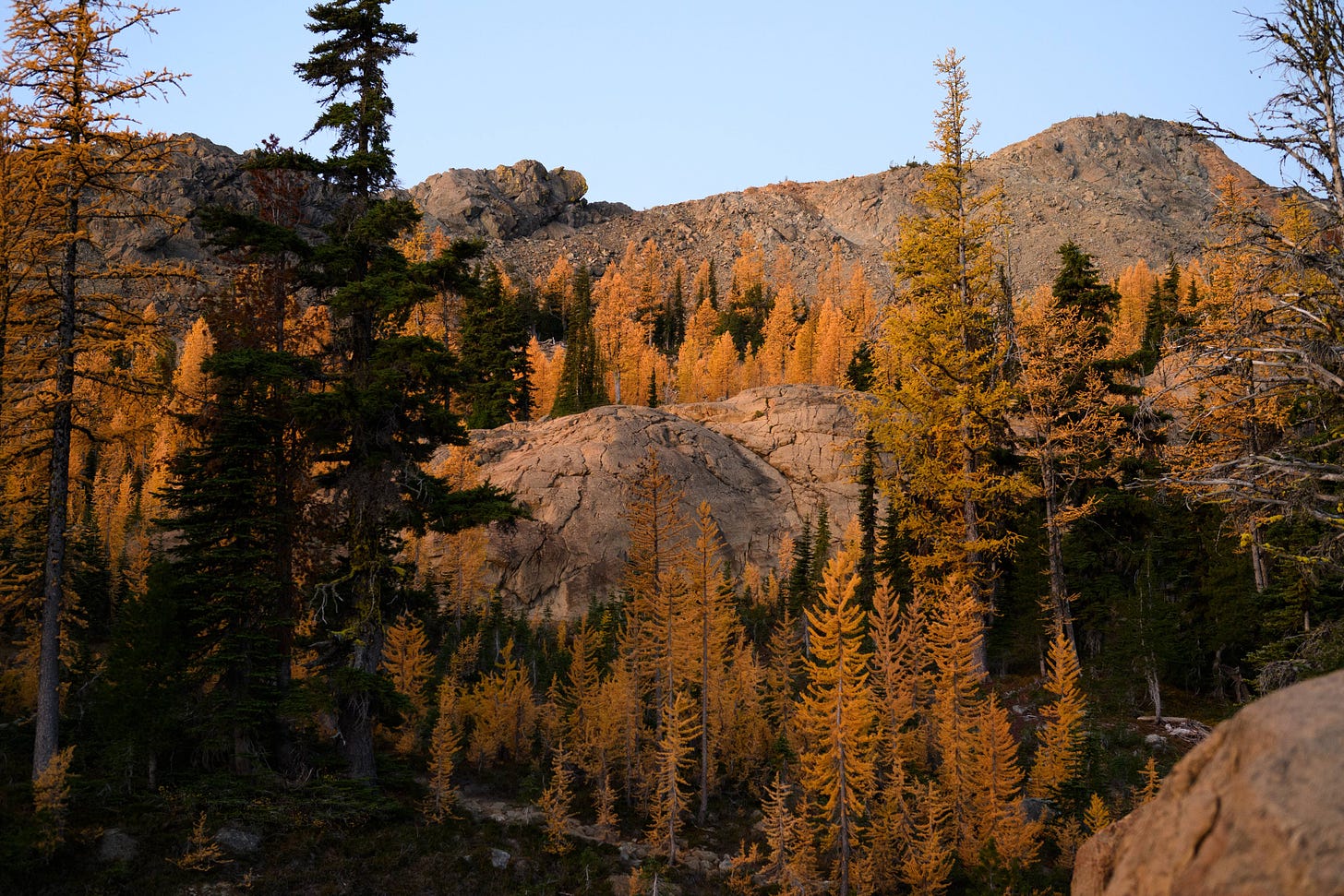
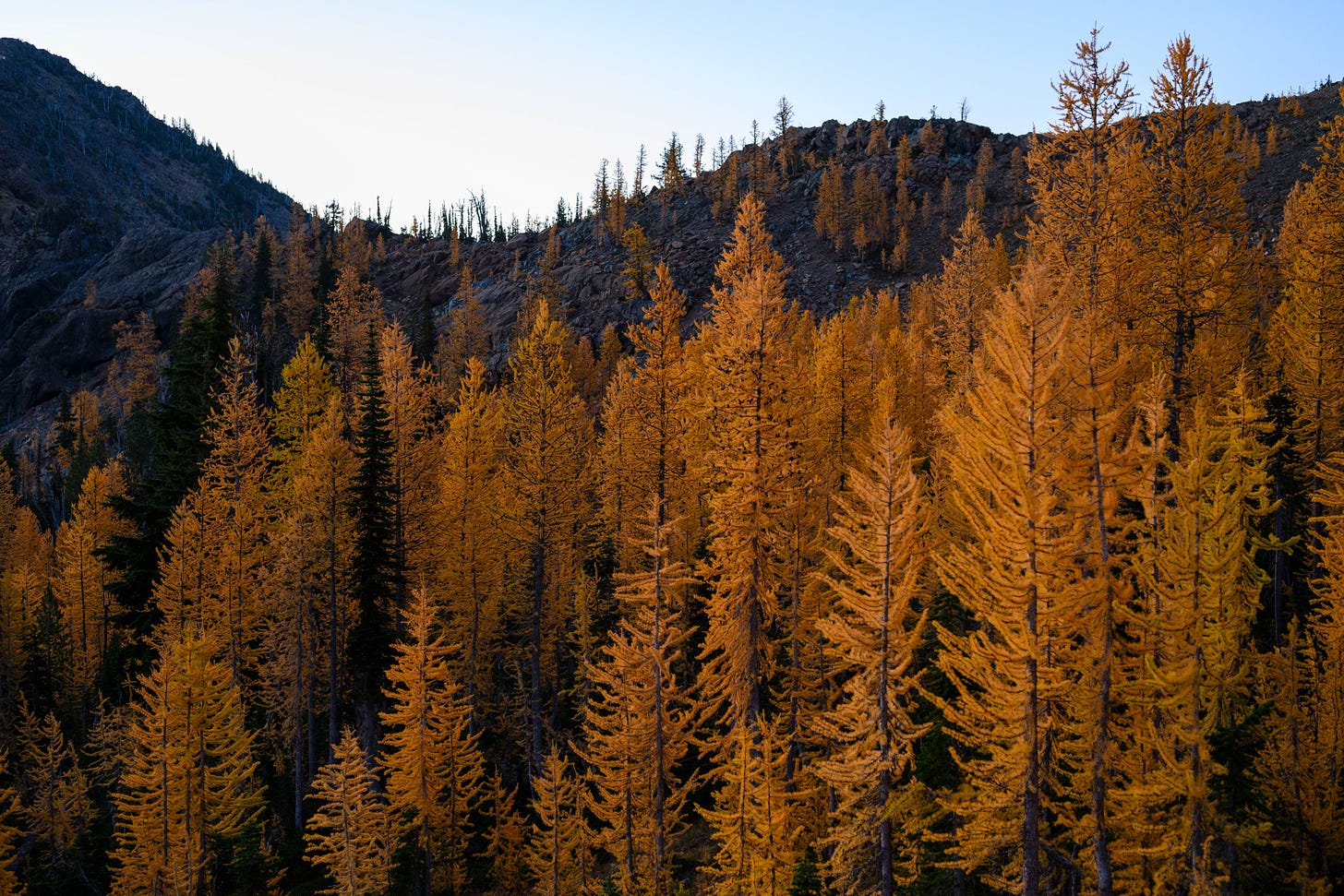
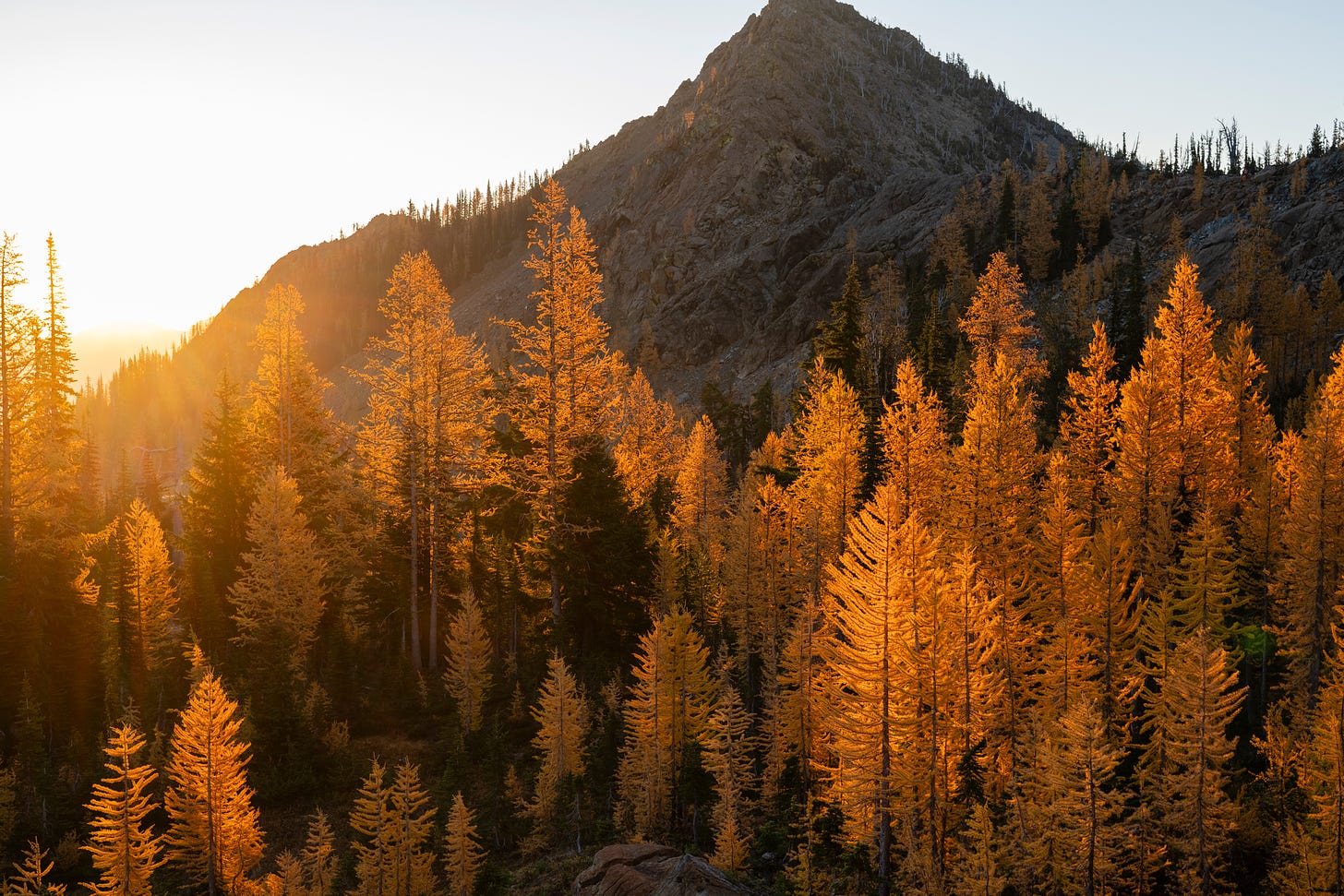
The light was incredibly dynamic at Headlight Basin in the morning [2]. Even in the same area, the colors would change by the second.
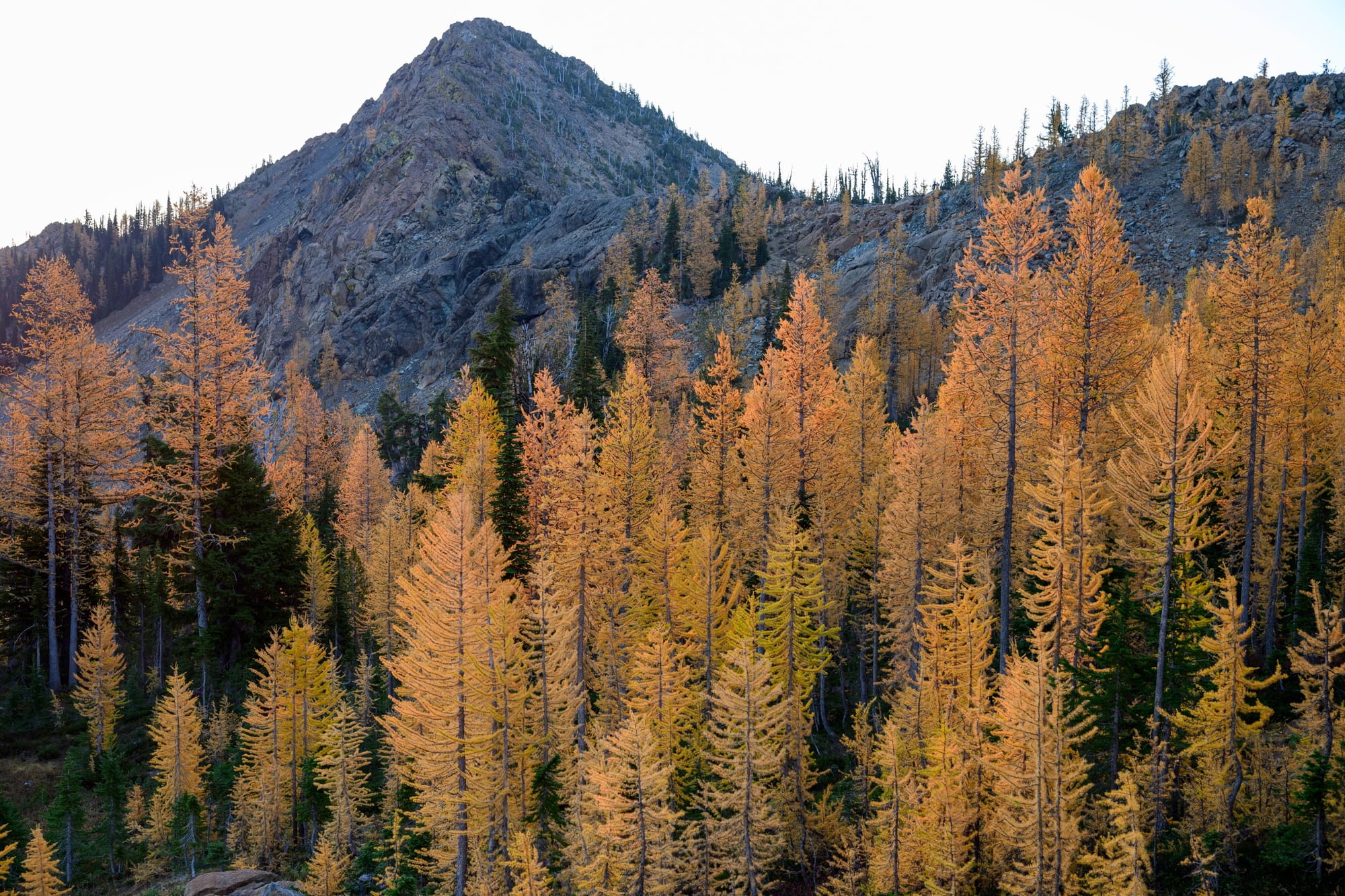
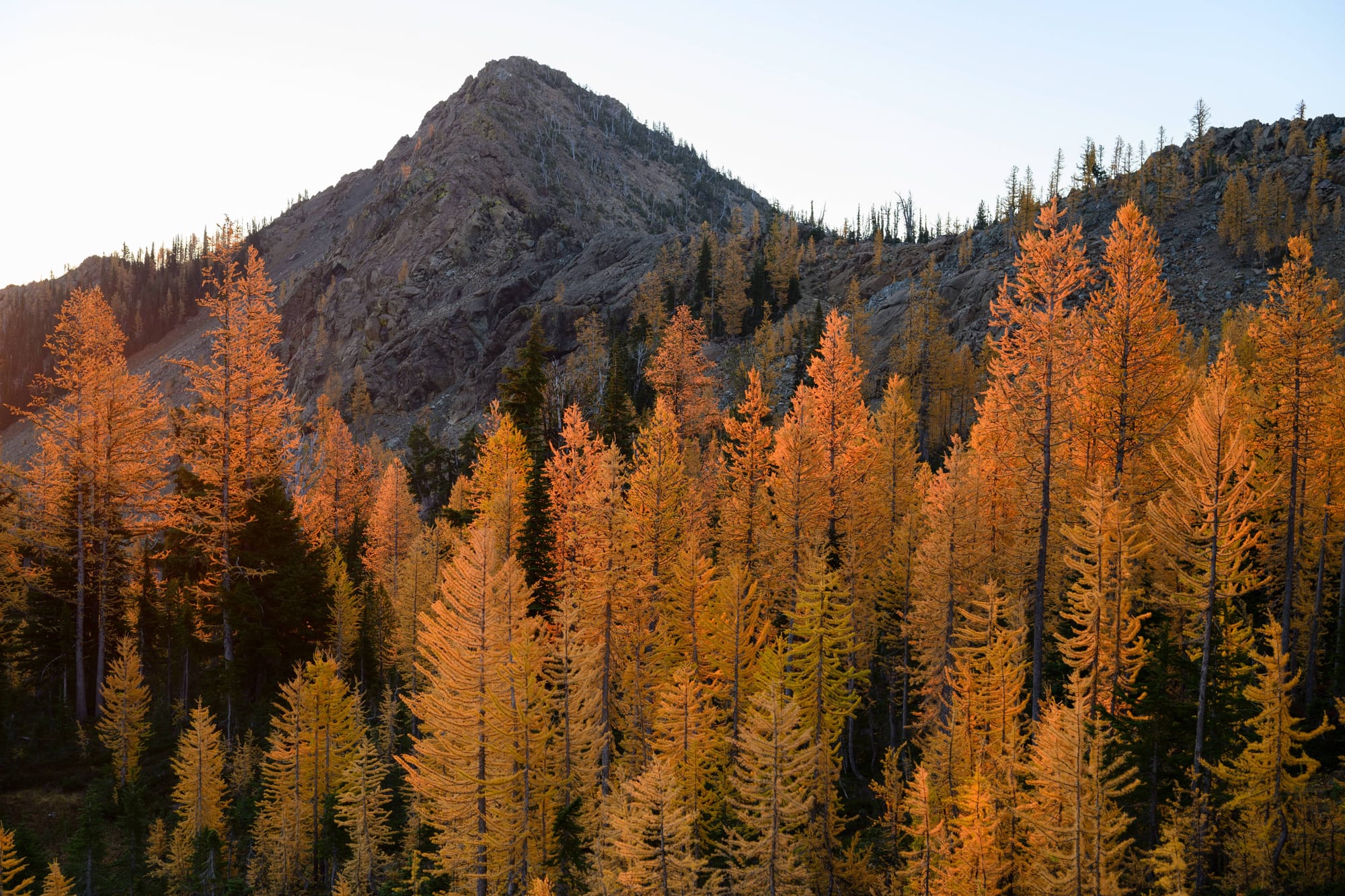
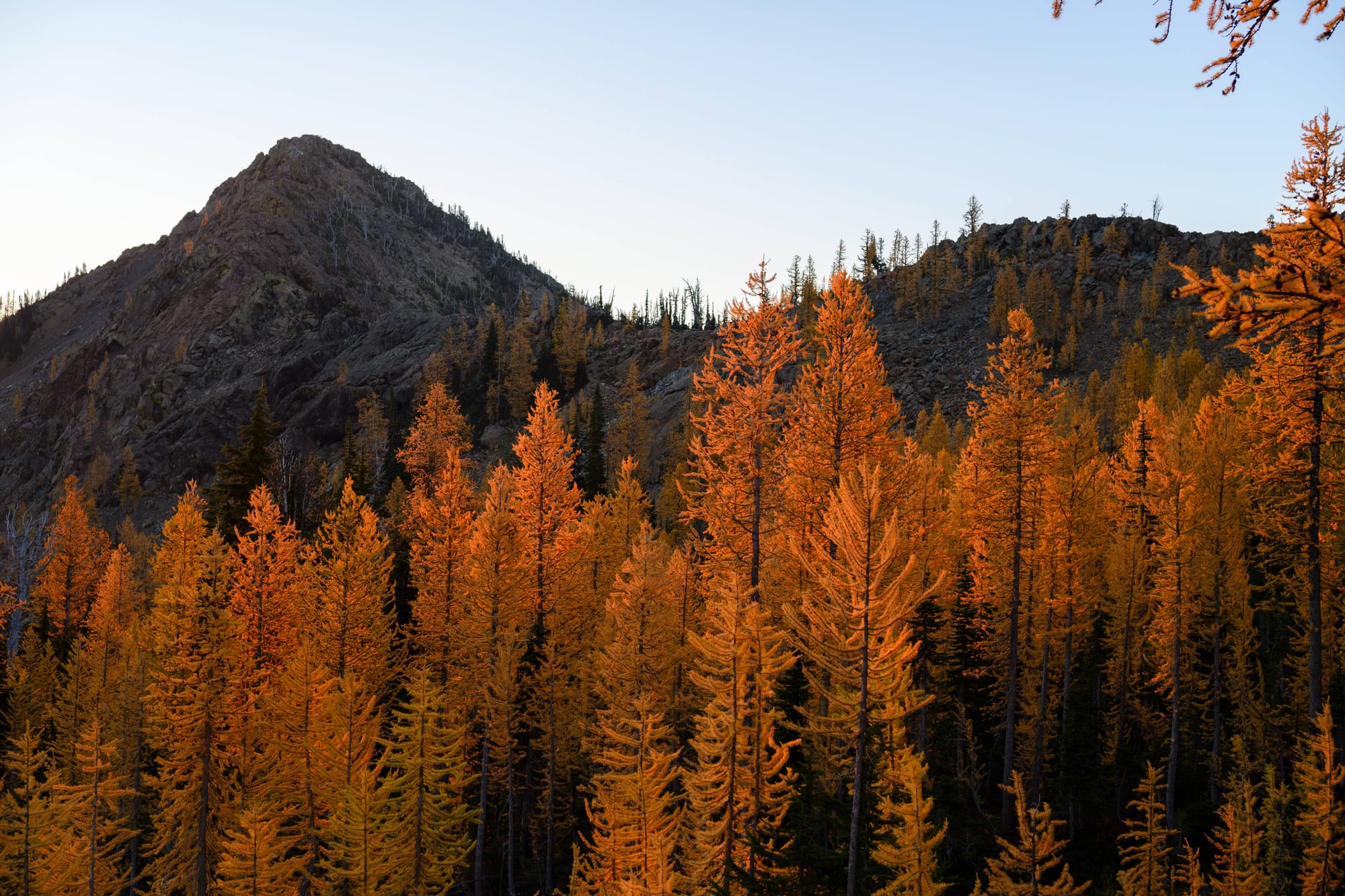
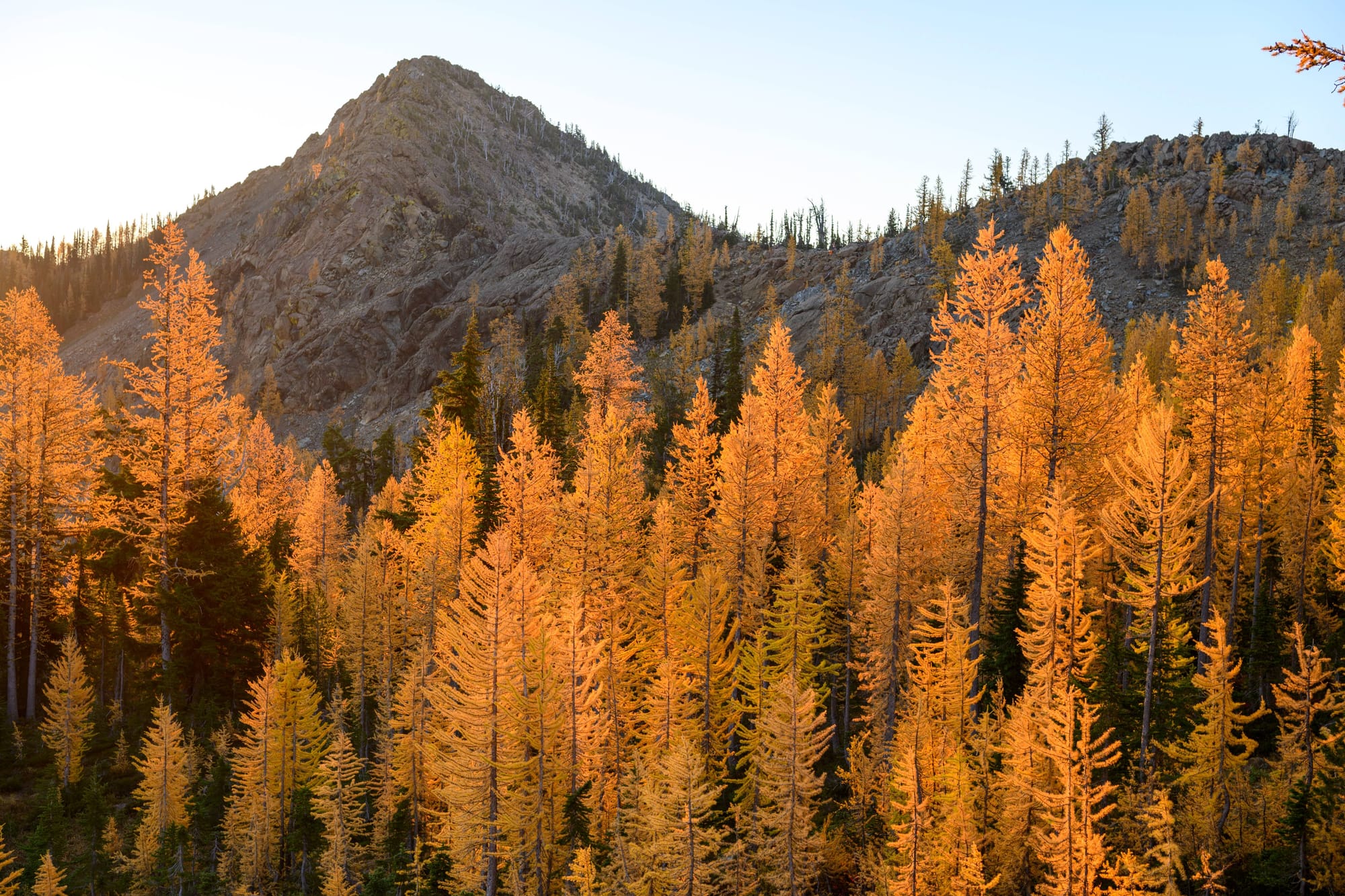
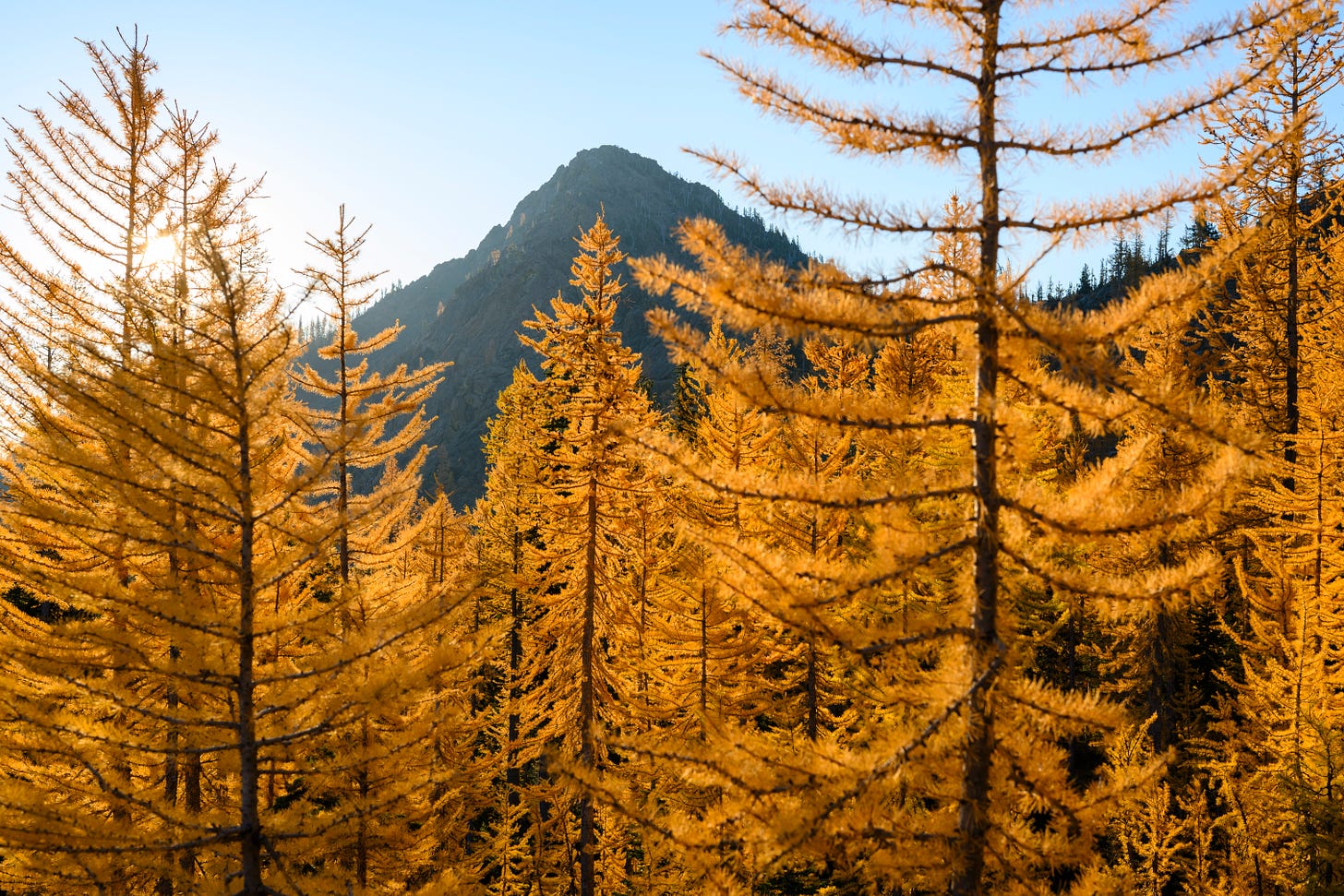
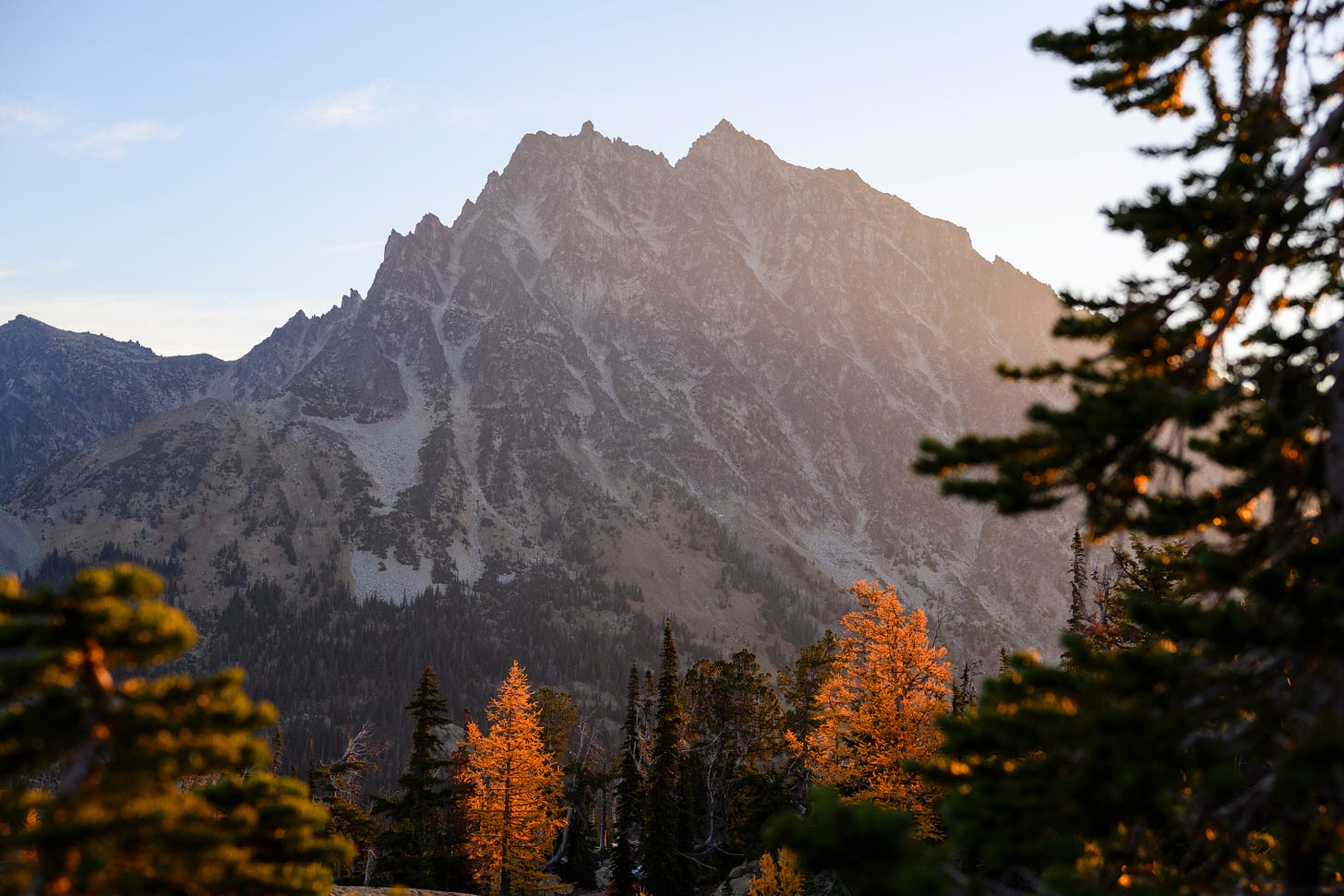
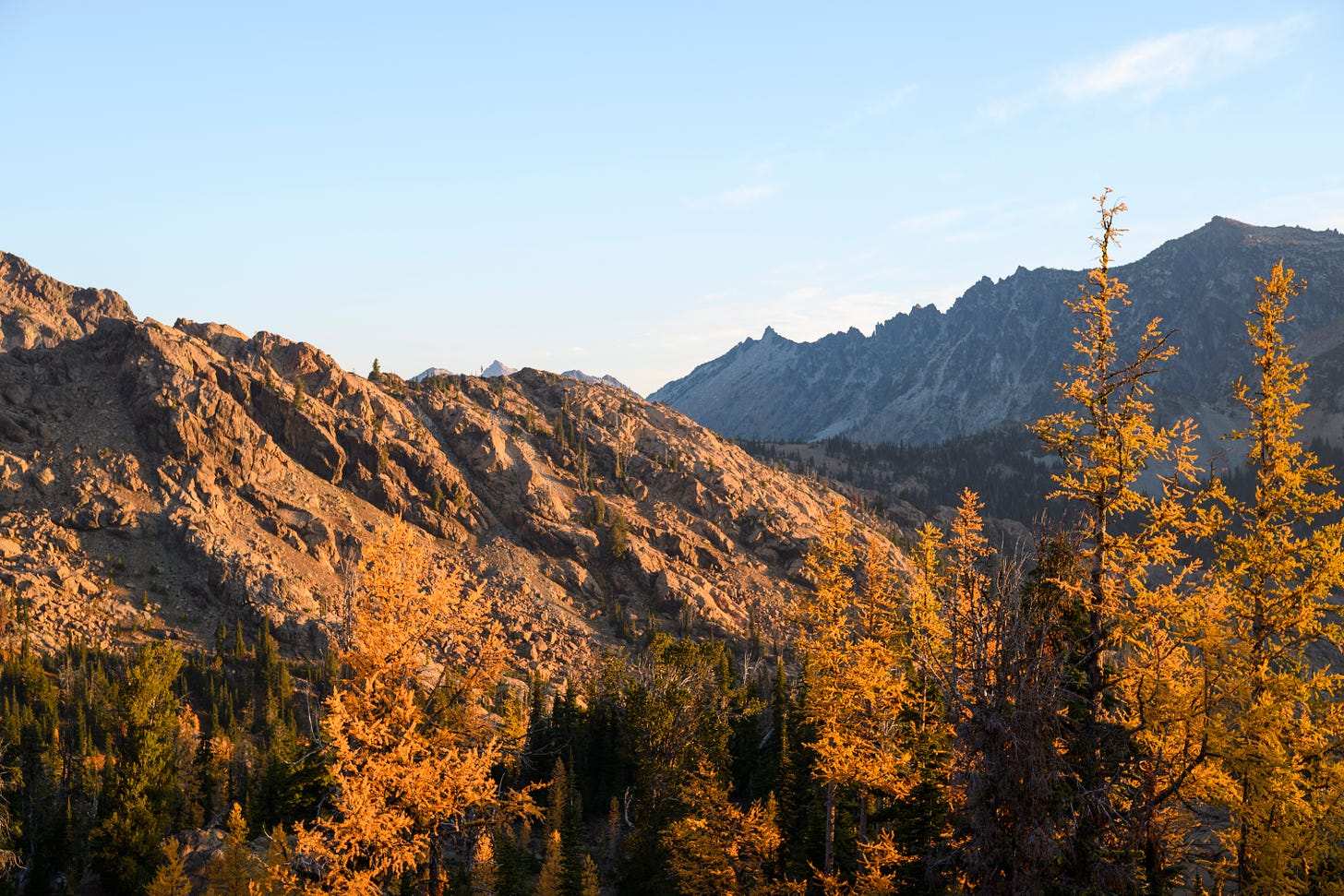
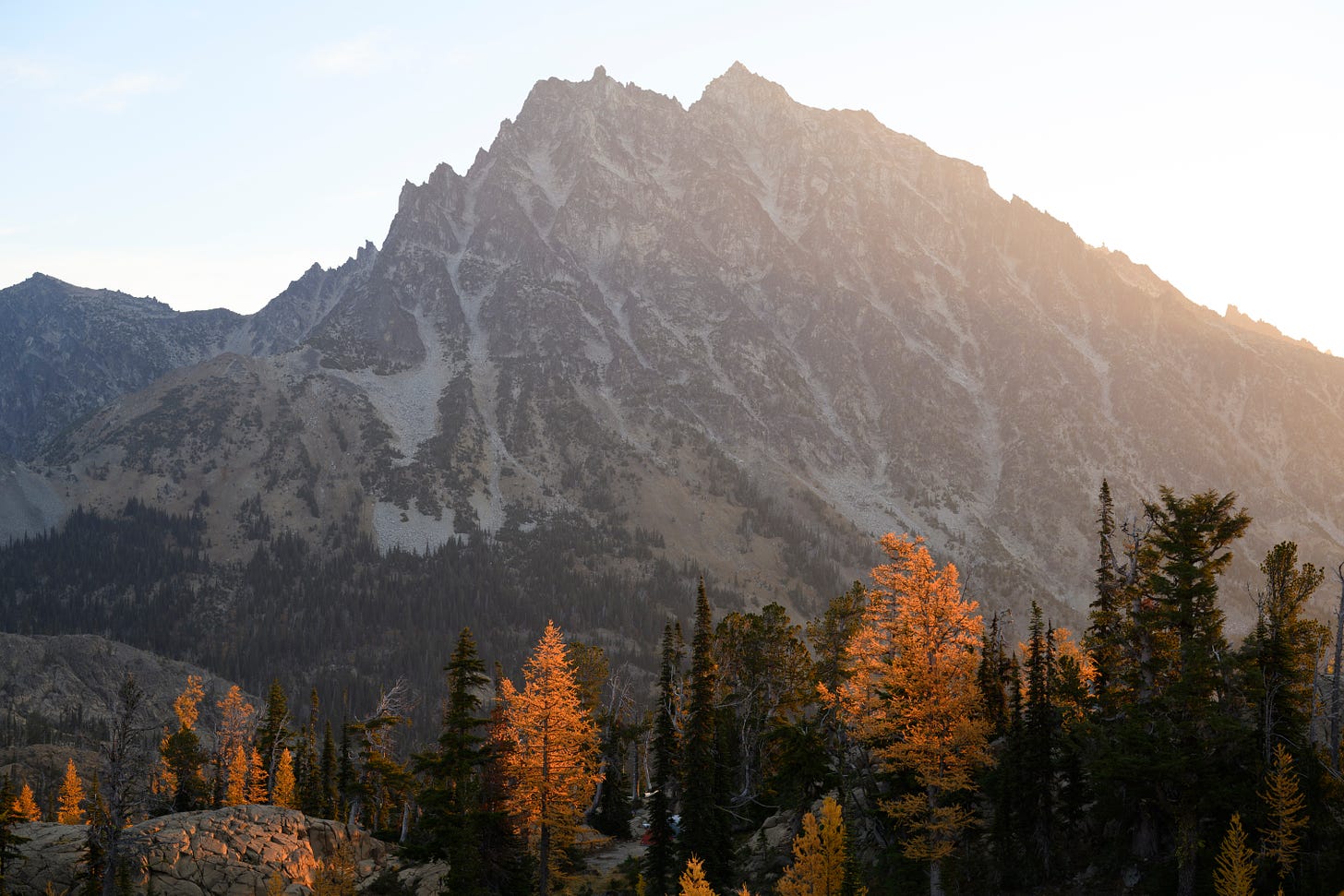
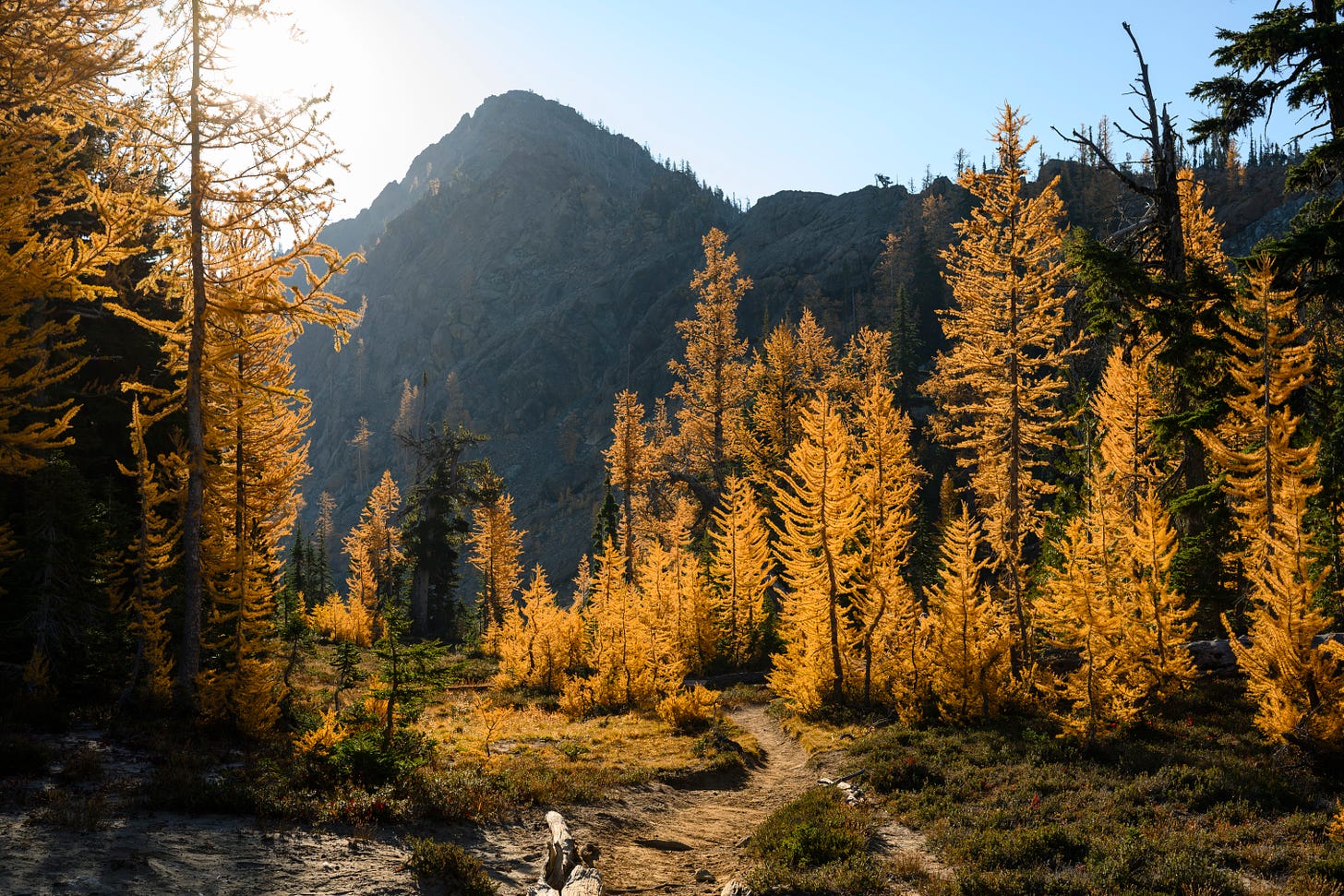
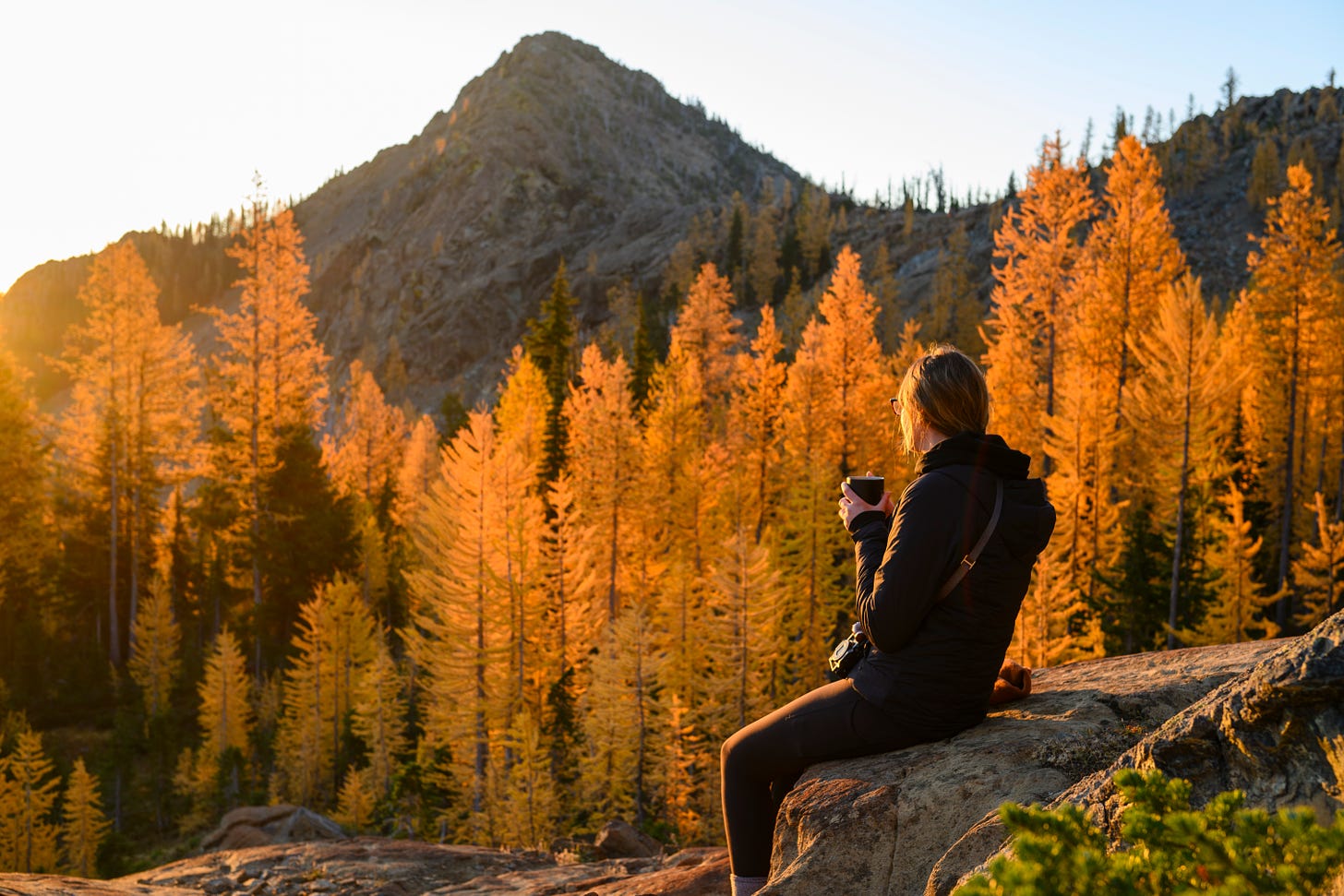
Until next year, larches.
Skylar
References
[1] The crowds are pretty insane, don’t even try to get to any trailhead after 9 am.
[2] I actually think Headlight Basin is was far better during sunrise than golden hour, at least for photography. As it sets, the sun drops behind a small ridge behind the larches, which meant it hit the larches while it was still pretty intense, causing some pretty harsh light and shadows. Maybe if there was some cloud coverage it would’ve been a little better. During sunrise though, the light was far more evenly disbursed and diffused across the whole valley.
